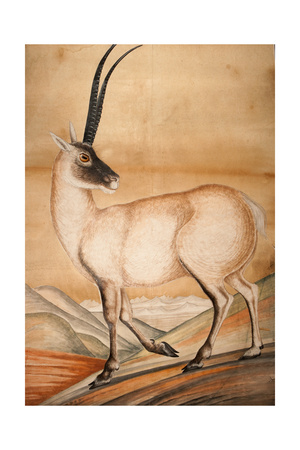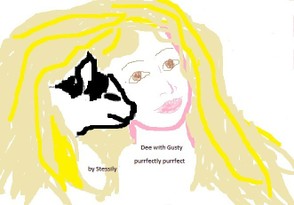Geographic distribution of chiru (Pantholops hodgsonii)
map (via Natural Earth) and distribution (via IUCN) data compiled by Rbrausse: IUCN Red List of Threatened Species, species assessors and the authors of the spatial data, CC BY SA 3.0, via Wikimedia Commons @ https://commons.wikimedia.org/wiki/File:Pantholops_hodgsonii_distribution.png
The Chiru (Pantholops hodgsoni)
illustration by Joseph Wolf (January 21, 1820 – April 20, 1899); lithography by Joseph Smit (July 18, 1836 – November 4, 1929); printing by Hanhart
Philip Sclater and Oldfield Thomas, The Book of Antelopes, Vol. III (1897-98), Pl. L, opposite page 45: Not in copyright, via Biodiversity Heritage Library @ https://www.biodiversitylibrary.org/page/42167679
Unlike sheep, chiru cannot be sheared. So they are killed for their wool, which is woven into the luxury fabric shahtoosh.
Mumbai's Navarang Exports and Cocoon North America pled guilty July 7, 2000, in federal court in Newark, New Jersey, for shahtoosh smuggling, in violation of ESA (Endangered Species Act) and CITES (Convention on International Trade in Endangered Species).
Between September 1994 and March 1995, 308 shahtoosh shawls (from over 1,000 chirus) were smuggled for sale in U.S. and France.: LaVonda Walton/US Fish and Wildlife Service, Public Domain, via Wikimedia Commons @ https://de.wikipedia.org/wiki/Datei:ShahtooshShawl-USFWS.jpg
Dr. George Schaller gives lecture at Beijing Zoo, August 10, 2005.
He holds a wireless device that is to be attached to a chiru's neck.
Xicheng District, central Beijing, northeastern China: Smartneddy, CC BY SA 3.0, via Wikimedia Commons @ https://commons.wikimedia.org/wiki/File:George_Schaller.jpg
"Head of chiru antelope, the unicorn of Tibet"
sketch by H.H. (Henry Hamilton) Maxwell (March 3, 1824-May 28, 1892) of Bengal Artillery from a pair brought to Dorjiling (Darjeeling), West Bengal, northeastern India
(Sir) Joseph Dalton Hooker, Himalayan Journals, Vol. II (1854), page 158: Public Domain, via Biodiversity Heritage Library @ https://www.biodiversitylibrary.org/page/39797492
Chiru: Tibetan antelope in a snow storm
Tibet; 2009: Ven. S. Dhammika, CC BY SA 3.0, via PhotoDharma.net @ https://www.photodharma.net/Guests/Dhammika-Himalayas/Dhammika-Himalayas.htm














 Are Hawaiian Huakai Po Nightmarchers Avenging Halloween Thursday?on 10/02/2024
Are Hawaiian Huakai Po Nightmarchers Avenging Halloween Thursday?on 10/02/2024
 Mailing Addresses for 2023 Form 4868 Extending 1040 and 1040SR April 15, 2024, Due Dateon 04/15/2024
Mailing Addresses for 2023 Form 4868 Extending 1040 and 1040SR April 15, 2024, Due Dateon 04/15/2024
 Mailing Addresses for 2023 Forms 1040 and 1040SR Filed in 2024on 04/15/2024
Mailing Addresses for 2023 Forms 1040 and 1040SR Filed in 2024on 04/15/2024
 Mailing Addresses for 2022 Form 4868 Extending 1040 and 1040SR April 18, 2023, Due Dateon 04/13/2023
Mailing Addresses for 2022 Form 4868 Extending 1040 and 1040SR April 18, 2023, Due Dateon 04/13/2023



Comments